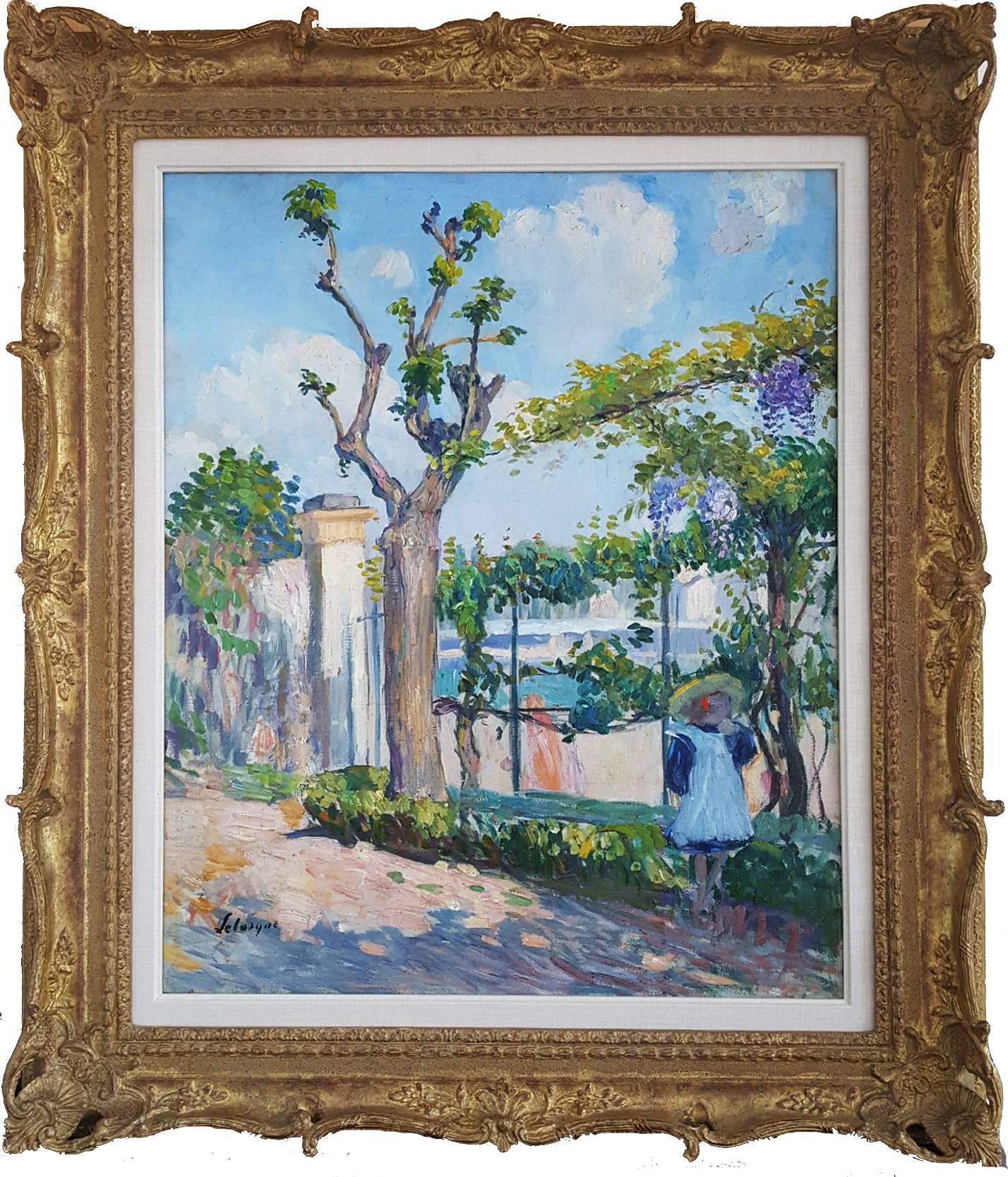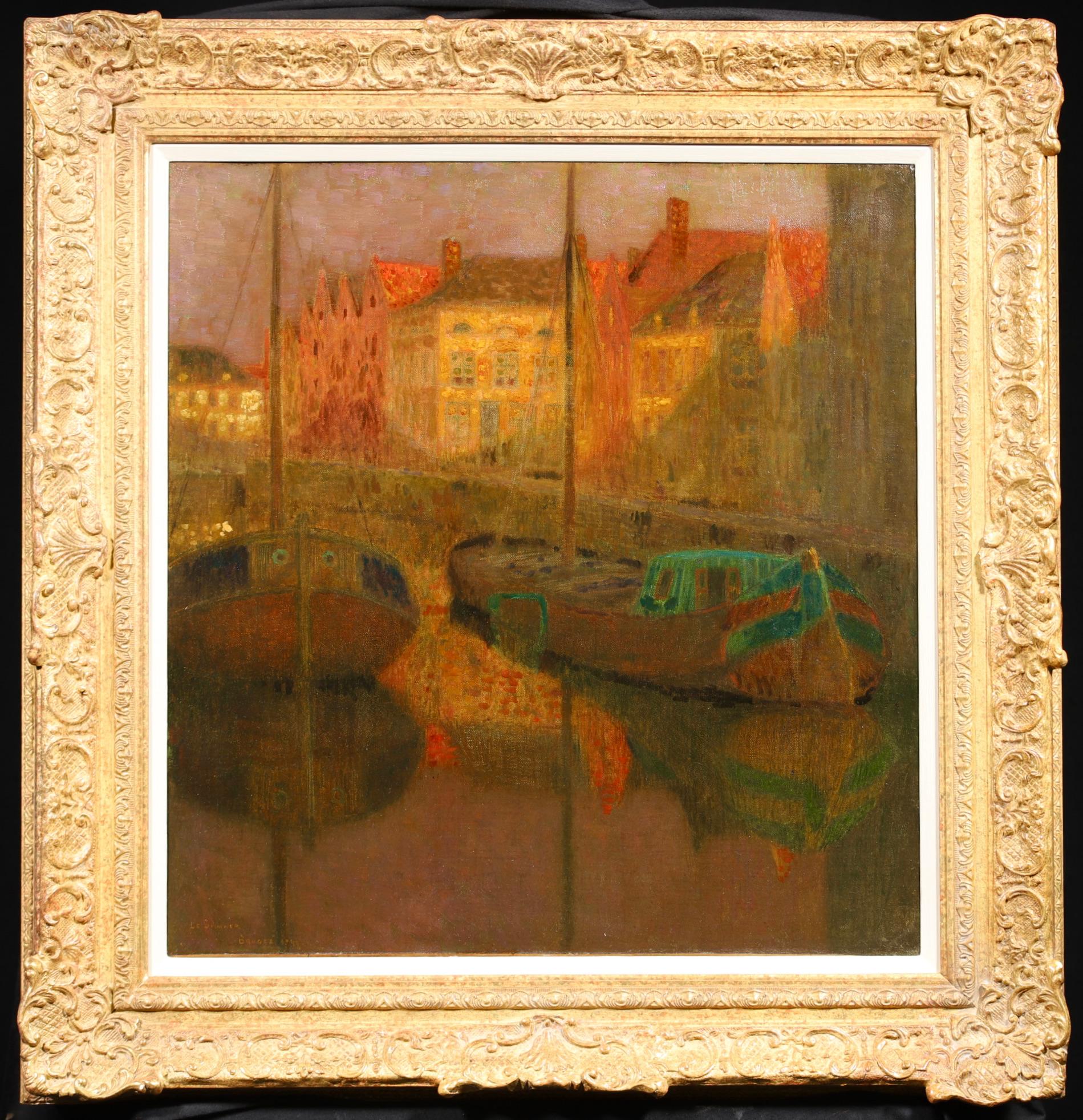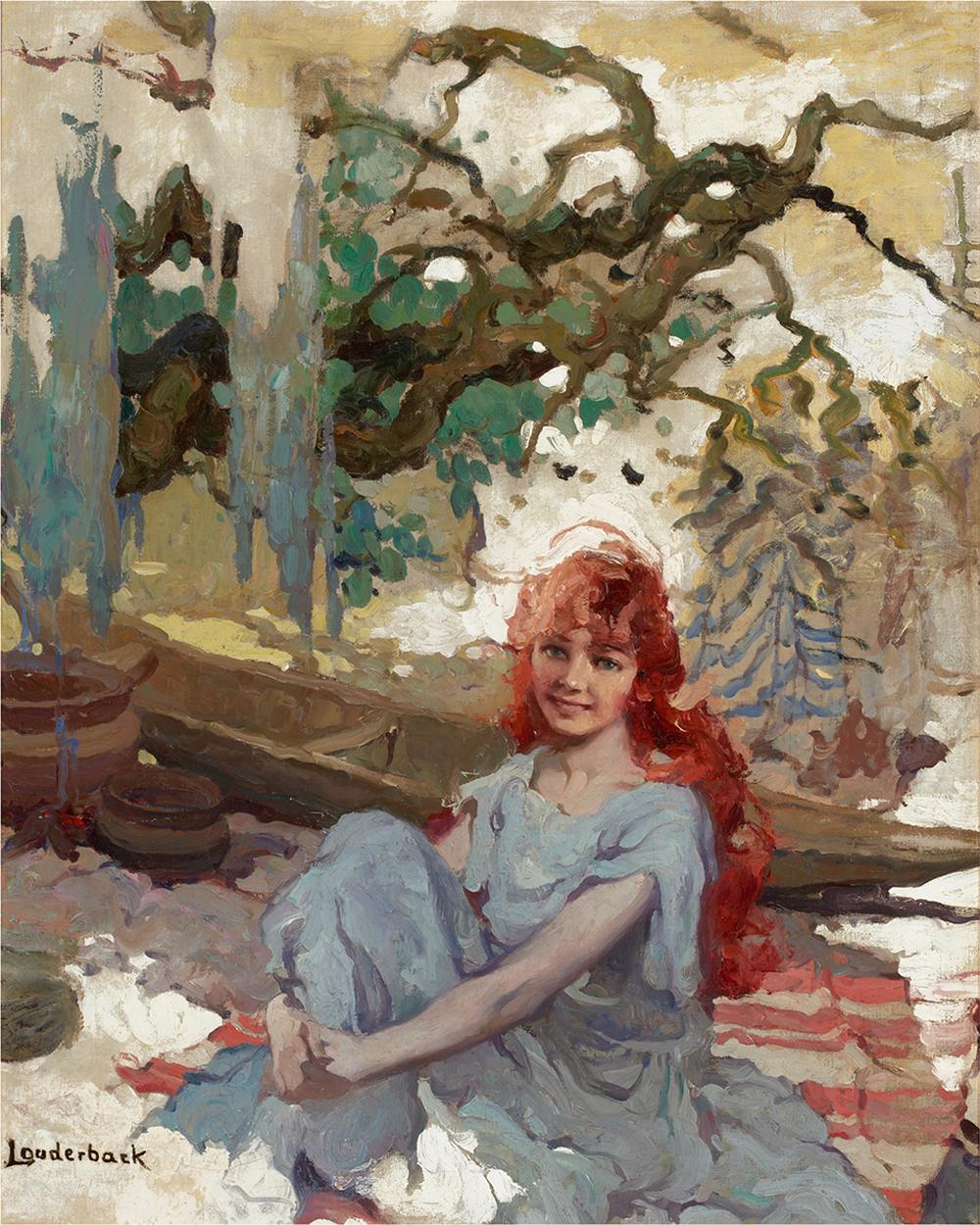Jacques Zucker"Village in Mexico" Post-Impressionist Town Scene Oil Painting on Canvas Framed20th Century
20th Century
About the Item
- Creator:Jacques Zucker (1900 - 1981, American)
- Creation Year:20th Century
- Dimensions:Height: 32.5 in (82.55 cm)Width: 25 in (63.5 cm)Depth: 3 in (7.62 cm)
- Medium:
- Movement & Style:
- Period:
- Condition:This painting is in very good condition for age, it has some scattered craquelure and creasing on the top middle section, also the canvas had a slight adjustment on the right edge to be professionally restretched to be displayed properly.
- Gallery Location:New York, NY
- Reference Number:
Jacques Zucker
Jacques Zucker was a prolific artist whose works are exhibited in museums and galleries around the world. Being heavily influenced by artists such as Chaim Soutine, Marc Chagall and Pierre-Auguste Renoir, we can see hints of their styles suggested in many of his works. Although he was very fond of these artists, Zucker's works are mainly impacted by his travels to Paris, America and France. Many of his works depict city street scenes, the seashore, flower still life and portraits of friends and relatives. He has developed a style completely apart from his influences, creating works that are rich in texture, color and emotion.
- ShippingRetrieving quote...Ships From: New York, NY
- Return PolicyA return for this item may be initiated within 7 days of delivery.
- "Parisian Street Scene" French Post-Impressionist Plein Air Painting on CanvasBy Constantin KlugeLocated in New York, NYA stunning and masterful depiction of a Parisian street view from the 20th Century. The artist executed this painting en plein air with street life and cars parked along into the dis...Category
Mid-20th Century Post-Impressionist Landscape Paintings
MaterialsCanvas, Oil
- "A View of Notre-Dame" Post-Impressionist Oil Painting Parisian Street SceneBy Andre FranchetLocated in New York, NYA beautiful oil on canvas painting by the French artist Andre Franchet. He was a Parisian painter known for his colorful cityscapes depicting the times of his generation. His work is...Category
Mid-20th Century Post-Impressionist Landscape Paintings
MaterialsCanvas, Oil
- "Parisian Scene by Pont Neuf & Notre Dam" Post-Impressionist Oil Painting CanvasBy Jacques ZuckerLocated in New York, NYThis painting depicts a colorful landscape scene by Pont Neuf with Notre Dam in the distance behind the bridge. The attractive perspective is what makes this painting so interesting ...Category
20th Century Post-Impressionist Landscape Paintings
MaterialsCanvas, Oil
- "Parisian Street Scene Arc de Triomphe" Post-Impressionist Oil Paint on CanvasLocated in New York, NYIn this piece, the artist depicts his subject in an abstract and impressionistic way, capturing the Arc de Triomphe busy street scene from the 20th Century with much life. The artist...Category
Mid-20th Century Post-Impressionist Landscape Paintings
MaterialsOil, Canvas
- "Parisian Street Scene by Porte Saint-Denis" Impressionist Oil Painting CanvasLocated in New York, NYA beautiful oil on canvas painting by the French artist, Jack Prudnik. Prudnik was an American painter known for his colorful cityscapes depicting the tim...Category
20th Century Post-Impressionist Landscape Paintings
MaterialsCanvas, Oil
- "Paris, Montparnasse" French Impressionist Street Scene Oil Painting on CanvasBy Anatol BouchetLocated in New York, NYA beautiful oil on canvas painting by French artist, Anatol Bouchet. Bouchet was an French painter known for his colorful cityscapes depicting the times of his generation. This paint...Category
20th Century Post-Impressionist Landscape Paintings
MaterialsCanvas, Oil
- Bords du Loing by Alfred Sisley - Oil, landscape paintingBy Alfred SisleyLocated in London, GB*THIS PRICE INCLUDES 5% IMPORT DUTY APPLICABLE IF THE WORK REMAINS IN THE UK ONLY. Bords du Loing by Alfred Sisley (1839-1899) Oil on canvas 46.1 x 55.7 cm (18¹/₈ x 21⁷/₈ inches) S...Category
1890s Post-Impressionist Landscape Paintings
MaterialsCanvas, Oil
- Le Jardin de Lagny - Garden with young girl Post-impressionistBy Henri LebasqueLocated in Miami, FLLe Jardin de Lagny Provenance: Arthur Tooth, London Radon Gallery, NY This beautiful evocation of a lyrical French landscape is a fine example of of Po...Category
Early 1900s Post-Impressionist Landscape Paintings
MaterialsOil, Canvas
- Barques de Peche - Post Impressionist Landscape Oil by Henri Le SidanerBy Henri Le SidanerLocated in Marlow, BuckinghamshireSigned post impressionist landscape oil on canvas by French painter Henri Le Sidaner. This stunning piece depicts two fishing boats moored in a fishing village at sunset. The last l...Category
1890s Post-Impressionist Landscape Paintings
MaterialsOil, Canvas
- Girl with canoe painted in Arts and Crafts styleBy Walt LouderbackLocated in Miami, FLSigned lower left. Most likely for Saturday Evening Post or Colliers. Louderback is a painter/illustrator of the Golden Age of Illustration...Category
1920s Post-Impressionist Figurative Paintings
MaterialsCanvas, Oil
- Haystack with Resting FiguresBy John Maclauchlan MilneLocated in Hillsborough, NCScottish artist John Maclauchlan Milne, RSA, (1885-1957) is a contemporary of Scottish Colourists Peploe, Fergusson, Cadell and Hunter. Like the...Category
1920s Post-Impressionist Landscape Paintings
MaterialsCanvas, Oil
- Henri-André Martin, Les Baux de Provence, Oil on Canvas, 1961By Henri-André MartinLocated in Saint Amans des cots, FROil on canvas by Henri-André Martin (1918-2004), France, ca.1980s. Les Baux de Provence. With frame: 71x98 cm - 28x38.6 inches. Without frame: 65x92cm - 25.6x36.2 inches. 30P format. Signed lower right "Henri A Martin" (see photo). Located and dated 1961 on the back (see photo). Can be matched to make a pair with another painting by Henri-André Martin that we offer on 1stdibs whose title is "Henri-André Martin Olive Tree Field in the Alpilles, Provence, Oil on Canvas". Born in Lyon in 1918, the child and the adolescent Henri-André Martin spent his youth in Saint-Étienne, his father, Edme Martin, first installed as a practicing doctor in Lyon, having been appointed doctor of the anti-tuberculosis dispensaries of the Loire. During his first years of studying medicine in Lyon, he nevertheless enrolled in the Beaux-Arts. Appointed hospital intern upon his return from captivity in 1942, he ended his medical career as director of the otolaryngology university clinic at Édouard-Herriot hospital. But painting was his passion. Painting was for Henri-André Martin the way of expressing his feelings. By nature very reserved and of an extreme modesty that many took for coldness, it was what allowed him to express his strong artistic sensitivity and, his pictorial periods are as many reflects of his anxieties, of his hopes, of his joys. At every period of his life, wherever he goes and whenever he has a moment, he paints gouaches, often of small size, but sometimes of larger size. He also paints beaches that have been compared to those of Boudin. Their invoice shows, however, that this figure is only appearance and that in fact, these beaches made of water, sky and sand, readily dispense with the motif, the work of the material seeming to have more importance. as the subject. Despite the fact that until the 1970s he painted "on the ground", his canvases remain far removed from the anecdote. Often harsh like the landscapes of Provence, the Parisian walls which express concern, or the railways, the switch tracks which suggest, in ocher and black, all the embarrassment of choice. We find the same nostalgic gravity in the canvases of the carcasses of boats which, as his friend Louis Pons later wrote, "seem to die of immobility" or in the canvases of Venice, or the landscapes of Eygalières. In the following years, his painting became simpler, more synthetic, such as these landscapes with tortured almond trees, black and gnarled olive trees, plane trees standing out against the ocher sky of the dawn of Provence, in winter. These are also the canvases of Hamburg in the dough becomes heavier, the colors darken, marking all the gravity of the port landscapes. Workshop work gradually takes precedence over motif painting. The pivotal period coincides with that of his work on the olive tree, during which he leads the realization of the "Trunks", a collection of six lithographic plates, of the book L'olivier comprising many lithographs and serigraphs, but also texts. poetic and numerous paintings. He then became passionate about everything related to the olive tree (literature, painting, traditions, history), but also to the tree itself, its thousand-year-old history, its poetry, its symbols, but also its culture, its size. oil production...Category
1960s Post-Impressionist Figurative Paintings
MaterialsCanvas, Oil





